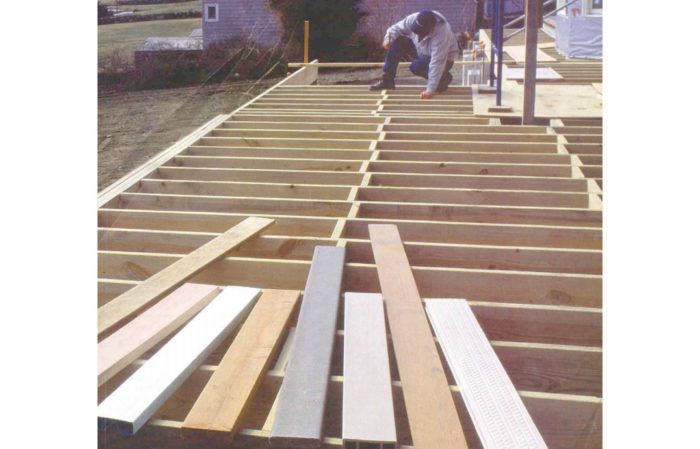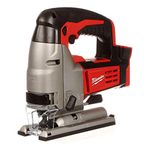Choosing Materials for Exterior Decks
From tropical hardwoods to man-made plastic composites, the choices are more varied than ever.

Synopsis: A guide to choosing materials for exterior decks. It discusses various types of lumber as well as man-made materials, covering initial cost, durability, and appearance, with suggestions for finding suppliers.
Few alterations to a house are as welcome as a new exterior deck. Structurally sound, cosmetically pristine, a new deck invites dawdling, the grilling of steaks, conversation, rustic contemplation, an extra hour with the Sunday paper. Blessed with such a structure, you have to remember only one thing. Before the last deck board goes down, nature is already hard at work trying to destroy what you have wrought.
With no protection from rain or sunlight, exposure to wood-devouring insects and cycles of heat and cold, the deck is in an environment that is just plain unforgiving. It hardly matters whether the deck is a simple ground-level platform or a grand multilevel structure. They all sit out in the same weather. Unless rebuilding a deck every few years appeals to you, the design process ought to include finding decking that forestalls the aging process as long as possible while offering the best balance between cost and aesthetics.
Traditionally, decking has been wood. Depending on what part of the country you live in, that might be redwood, western red cedar or pressure-treated southern pine. Other types of wood decking also are becoming easier to find: Alaska yellow cedar; rain-forest hardwoods such as ipe; red meranti from Malaysia. In addition, two new categories of decking have appeared in recent years: composites of natural fiber and recycled plastic, and decking made entirely of extruded vinyl.
More decking choices that are also widely available
In all, there are more choices than ever before, with prices ranging from less than $2 per sq. ft. to $10 per sq. ft. of deck. All these materials should be available no matter where you live, either through your local lumberyard or directly from a more distant supplier. Internet shopping has made it a lot easier to find material you can’t buy locally. Materials described on the following pages are widely used and widely available, but they are by no means your only choices. Prices fluctuate and may vary from one part of the country to another. Prices used here were obtained from a number of sources, including manufacturers, suppliers, and retailers. They may be slightly higher or lower than the prices in your area. They do not include shipping.
In general, wood decking is sold either in 5/4 or 2-in. nominal thicknesses. After milling and drying, these boards are 1 in. or 1-1/2 in. thick. An exception is tropical hardwoods, much stiffer and harder than North American woods. These species are often sold in a nominal 1-in. thickness, measuring 3/4 in. when you buy it, or 5/4 in. In residential decking, 5/4 material and 1-in. tropical hardwoods are generally intended for installation over framing spaced 16 in. o. c.; 2x material usually goes over 24-in. o. c. framing. The two most common widths are 4 in. and 6 in. In the western United States, 2x decking is most common; in the East, it’s the 5/4 variety.
For more photos and details, click the View PDF button below:
Fine Homebuilding Recommended Products
Fine Homebuilding receives a commission for items purchased through links on this site, including Amazon Associates and other affiliate advertising programs.

Jigsaw

FastenMaster Screw Bolt Fastening System

Homebody: A Guide to Creating Spaces You Never Want to Leave


























